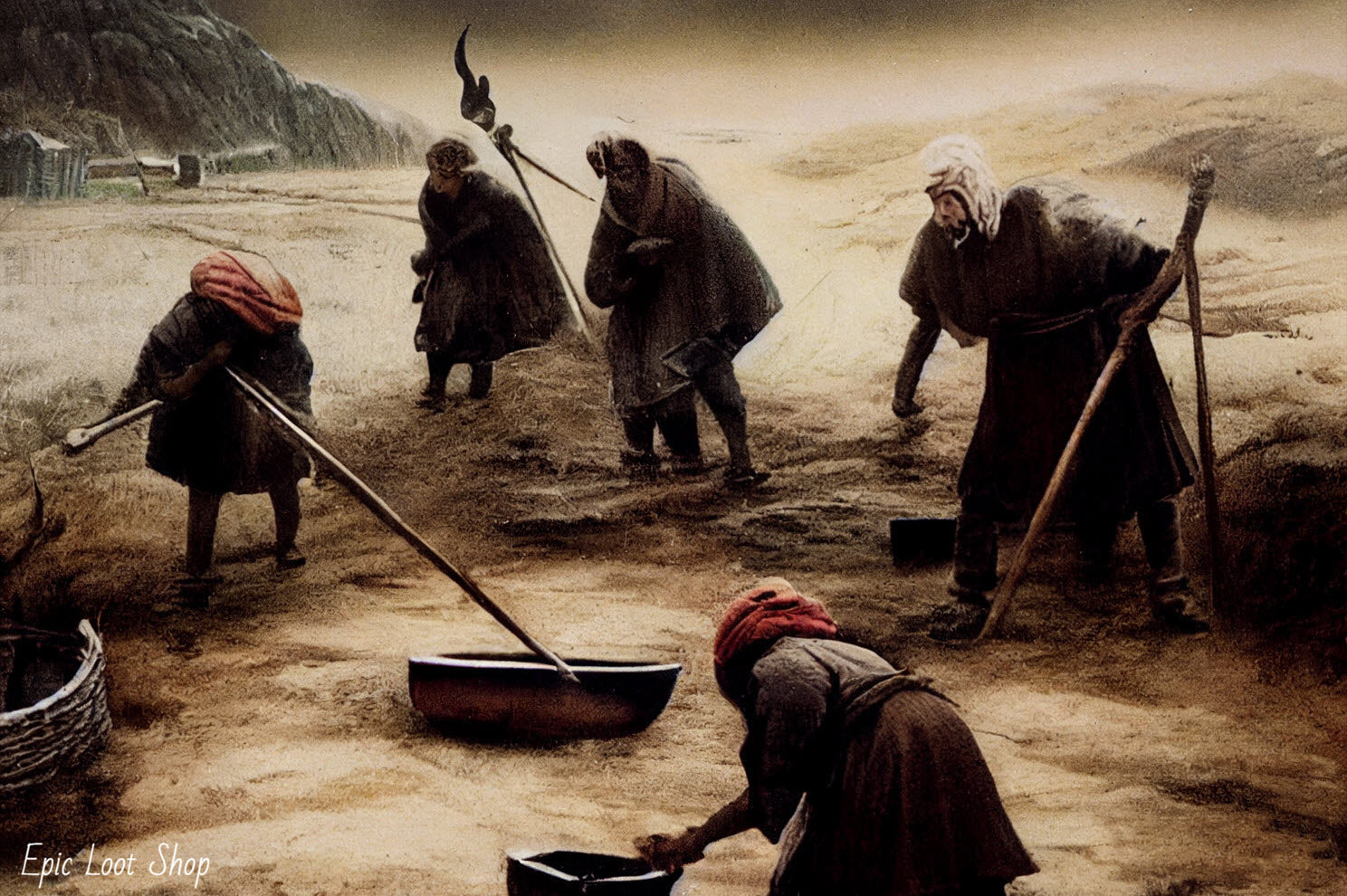Viking Slaves
Who were the Viking Slaves? Were they Giants, some kind of “other”, or just men? Were they men worse than death? Or did the Viking slaves have a better life than most free people of their age?
What were Viking slaves used for?
In the Viking Age, slaves were an important part of society. Slaves were people who had been captured during raids or wars, or people who had been born into slavery. They could be sold to others and had no right to their own possessions.
In addition to being a valuable commodity in the Viking world, slaves served as domestic servants, manual laborers, and even soldiers.
Slaves were often used as workers on large farms or small holdings. They did not have to be paid wages because they were considered property of the owner and their labor was expected as part of their upkeep.
Slaves could also be kept for domestic duties such as cooking and cleaning. This may seem like an easy task but imagine having to clean up after someone else's family every day! Not only did this help keep down the amount of work that needed to be done around the farm but it also gave the family extra time in which they could focus on other things like plowing fields or raising animals.
How did Vikings treat their female slaves?
There is no doubt that the Vikings were a brutal and ruthless people. They were known for raping and pillaging, but they did have a code of conduct and laws. So how did they treat their female slaves?
The Vikings treated their female slaves differently than they treated their male slaves. While male slaves were often killed, female slaves were often kept as concubines.
Slaves in general were typically treated poorly, but there was one exception: if the slave was a child or a woman.
The Vikings did not kill children because they believed that all human life was sacred. They also did not kill women because they believed that it would be bad luck to do so, which could cause a negative reaction from the gods (who might punish them for killing off so many people).
One of the reasons why female slaves were kept alive was because the Vikings believed that it was good luck to have sex with young girls or virgins because it would bring them good fortune and prosperity. This belief was also extended to other cultures around Europe at this time period, including Christianity and Islam, who had similar beliefs about having sex with virgins being beneficial for men.
Did Vikings release slaves?
Vikings did release slaves. If a Viking slave was released by his master, he would be free to do whatever he wanted after that point. He might leave their village or city and go somewhere else where there wasn't any more fighting or bloodshed, or he might stay with his master if the master allowed him to do so.
The most common reason for releasing a slave was because the person being freed was related to the master in some way. It could be because they are family members who have been captured by another group of people and sold into slavery, or it can be because they are simply friends who have been captured together and sold into slavery as well.
What were Viking slaves called?
The most common term for a Viking slave was thrall, which means "bond servant." However, there were other terms that could be used to refer to slaves.
Some of the more common ones were:
Húskarl (housecarle) - This was a special class of slaves who served their masters as attendants and bodyguards. A húskarl was often well-treated and given better treatment than other slaves. They usually had their own rooms in the master's house and were allowed to carry weapons. Their status depended on how wealthy and powerful their masters were. If a húskarl was very loyal, he might become a freeman or even a landowner himself someday.
Þræll (thrall) - This is the most common term for slave in Old Norse sources, but it only referred to agricultural laborers or domestic servants. It didn't refer to all kinds of slaves who worked for Vikings; it just referred to those who worked on farms or in households.
Who did Vikings sell slaves to?
The Vikings sold slaves to many countries in Europe, as well as the Middle East and North Africa. Many of the slaves were women who were sold into marriage with men in other countries.
The Vikings also sold slaves to other Vikings. Slaves could be bought and sold just like any other type of property. For example, if you wanted a new slave but didn't have the money, you could borrow money from someone else and then pay them back once your new slave had worked off their debt by working on your farm or in your house.
Slaves could also be given as gifts between friends or family members. This was common among rich people who might give their children gifts of slaves when they got married or became a parent for the first time because they wanted to show off how wealthy they were!
Did Vikings have concubines?
Vikings did not have concubines. The word concubine is not an accurate term for what Viking women were. The word concubine comes from the Latin 'concubare' for 'to lie with'.
Viking women were wives, even if they only had one husband. They were not in any way considered second-class citizens or less important than men. If a woman was married to someone other than her father, she would be considered a wife and her husband would be considered her husband, even if he was younger than her or she was older than him.
The only difference between men and women in this regard is that men could have multiple wives but no woman could have more than one husband at once.
Conclusion
The Viking Slaves were not always as despised as we have been led to believe from the Viking Sagas. Just like today, it seems, there were those with little or no power and those with a lot of power. The slaves served their masters well. Some even became wealthy and purchased their freedom. And many Njálings wanted to use their influence to release the slaves when they could. We can see that the law system was in conflict with the Viking view of justice. It was not always purely based on law; it had aspects of honor as well.




Dejar un comentario